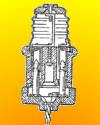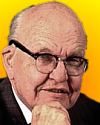
Born 8 Nov 1923; died 20 Jun 2005 at age 81.
Jack St Clair Kilby was an American electrical engineer who invented the first integrated ciruit (IC), for which he shared the 2000 Nobel Prize in Physics. His interest in electronics grew out of his in school-age hobby of amateur radio. Year later, working at Texas Instruments, he devised a way to miniaturize a complicated transistor circuit by building its components on a block of silicon with internal connections that eliminated external wiring. On 12 Sep 1958, he demonstrated his first integrated circuit to his supervisor. A few months later, an IC device in an improved form was independently invented elsewhere by Robert Noyce. Geoffrey W.A. Dummer also had the concept years earlier, but not a working device. In Sep 1965, Kilby's team developed the first shirt-pocket electronic calculator using IC's.«
Jack St Clair Kilby was an American electrical engineer who invented the first integrated ciruit (IC), for which he shared the 2000 Nobel Prize in Physics. His interest in electronics grew out of his in school-age hobby of amateur radio. Year later, working at Texas Instruments, he devised a way to miniaturize a complicated transistor circuit by building its components on a block of silicon with internal connections that eliminated external wiring. On 12 Sep 1958, he demonstrated his first integrated circuit to his supervisor. A few months later, an IC device in an improved form was independently invented elsewhere by Robert Noyce. Geoffrey W.A. Dummer also had the concept years earlier, but not a working device. In Sep 1965, Kilby's team developed the first shirt-pocket electronic calculator using IC's.«
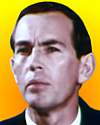
Born 8 Nov 1922; died 2 Sep 2001 at age 78. quotes
Christiaan Neethling Barnard was a South African surgeon who performed the world’s first human heart transplant operation. In a five-hour operation on 3 Dec 1967, Barnard successfully replaced the diseased heart of Louis Washkansky (55) with a healthy heart from Denise Darvall, a woman in her mid-20s with the same blood type, who died in hospital after an automobile accident. Barnard knew it was a surgical success when he first applied electrodes and the heart resumed beating. Washkansky died 18 days later of double pneumonia as a result of his suppressed immune system. It was a milestone, however, in a new field of life-extending surgery. Rheumatoid arthritis and advancing stiffness in his hands forced his retirement from surgery in 1983.
Christiaan Neethling Barnard was a South African surgeon who performed the world’s first human heart transplant operation. In a five-hour operation on 3 Dec 1967, Barnard successfully replaced the diseased heart of Louis Washkansky (55) with a healthy heart from Denise Darvall, a woman in her mid-20s with the same blood type, who died in hospital after an automobile accident. Barnard knew it was a surgical success when he first applied electrodes and the heart resumed beating. Washkansky died 18 days later of double pneumonia as a result of his suppressed immune system. It was a milestone, however, in a new field of life-extending surgery. Rheumatoid arthritis and advancing stiffness in his hands forced his retirement from surgery in 1983.
One Life, by Christiaan Barnard and Curtis Bill Pepper. - book suggestion.
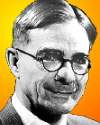
Born 8 Nov 1904; died 7 Mar 1997 at age 92.
Dutch inventor who helped to transform aircraft construction by developing strong new lightweight materials and synthetic glues. In 1928, he joined Ernest Rutherford at his Cavendish Laboratory in atomic research. Subsequently developing an interest in flying, by 1934 he started his own company, Aero Research to research his invention of a new form of synthetic glue. The long-established casein glues used until then in the building of wooden aircraft were seriously affected in hot and humid conditions. His own revolutionary cantilever-wing “Snark” monoplane utilized his new bonding methods. Later, his metal-to-metal bonding of lightweight and very strong aluminium honeycomb aircraft structures were extensively used during WW II.[Born in Chile to Dutch parents. Educated and spent most of his life in England. Late in life emigrated and took American citizenship, but returned to England.]
Dutch inventor who helped to transform aircraft construction by developing strong new lightweight materials and synthetic glues. In 1928, he joined Ernest Rutherford at his Cavendish Laboratory in atomic research. Subsequently developing an interest in flying, by 1934 he started his own company, Aero Research to research his invention of a new form of synthetic glue. The long-established casein glues used until then in the building of wooden aircraft were seriously affected in hot and humid conditions. His own revolutionary cantilever-wing “Snark” monoplane utilized his new bonding methods. Later, his metal-to-metal bonding of lightweight and very strong aluminium honeycomb aircraft structures were extensively used during WW II.[Born in Chile to Dutch parents. Educated and spent most of his life in England. Late in life emigrated and took American citizenship, but returned to England.]
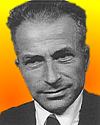
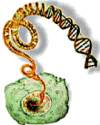
Albert F(riedrich) Frey-Wyssling was a Swiss botanist and pioneer of submicroscopic morphology who helped to initiate the study later known as molecular biology. This scientific discipline deals with the molecular basis of living processes. Molecular biology now involves both biochemistry and biophysics. Its growth since the 1930s has been made possible by the development of such techniques as chromatography, electron microscopy, and X-ray diffraction, which have revealed the structures of biologically important molecules, such as DNA, RNA, and enzymes. Heredity, and the development, organization, and function of living cells, all depend on the physical and chemical properties of the molecules involved.
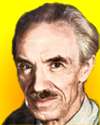
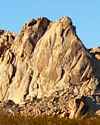
desert granite mountain
German geologist who was a pioneer in the study of granite tectonics (the deformation of crystalline rocks) and in model studies of rock deformation. He studied the structure and development of the continents and was one of the first investigators to make use of true scale models to investigate the mechanics of faulting. His publications include Der Mechanismus tiefvulkanischer Vorgänge (1921; “The Mechanism of Deep Volcanic Events”). In his autobiography, Conversation with the Earth, (1953) he wrote “geology is the music of the earth.”
Conversation with The Earth, by Hans Cloos. - book suggestion.
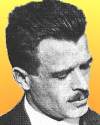

Swiss psychiatrist who devised the inkblot test that bears his name and that is widely used clinically for diagnosing psychopathology. His secondary-school nickname was Kleck, meaning “inkblot,” because of his interest in sketching. In 1917, he learned of Szyman Hens, who had studied the fantasies of his subjects using inkblot cards. Rorschach began in 1918 using 15 accidental inkblots, asking patients, “What might this be?” He knew the human tendency to project interpretations and feelings onto ambiguous stimuli. The subjective responses of his subjects enabled him to distinguish among them on the basis of their perceptive abilities, intelligence, and emotional characteristics. His published results (1921) drew little interest until after his death.
Psychodiagnostics, by Hermann Rorschach. - book suggestion.

Born 8 Nov 1881; died 6 Feb 1950 at age 68.
American anthropologist and ethnographer of the Eastern Woodland Indians, who chose to study and preserve knowledge of their culture. As a boy, he lived with Fidelia Fielding, a Native American, and the last speaker of her tribal language, from whom he learned the Mohegan language and literature. With this rich background, at university he began study of anthropological linguistics, encouraged by anthropologist Franz Boas. Speck spent his career in extensive fieldwork. By staying with the Indian comunities he earned the trust of the tribes. He reconstructed scattered remnants of ritual and lore into an extensive record. He collected arts and crafts as artifacts of the material culture, and was a pioneer in ethnoscience and ethnomusicology.«
American anthropologist and ethnographer of the Eastern Woodland Indians, who chose to study and preserve knowledge of their culture. As a boy, he lived with Fidelia Fielding, a Native American, and the last speaker of her tribal language, from whom he learned the Mohegan language and literature. With this rich background, at university he began study of anthropological linguistics, encouraged by anthropologist Franz Boas. Speck spent his career in extensive fieldwork. By staying with the Indian comunities he earned the trust of the tribes. He reconstructed scattered remnants of ritual and lore into an extensive record. He collected arts and crafts as artifacts of the material culture, and was a pioneer in ethnoscience and ethnomusicology.«
Naskapi: The Savage Hunters of the Labrador Peninsula, by Frank G. Speck. - book suggestion.
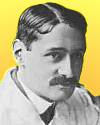
Born 8 Nov 1881; died 6 Dec 1957 at age 76.
French engineer and aviator who made important pioneering contributions to the beginnings of heavier-than-air flight in Europe. He built a copy of the glider made in 1902 by the brothers Orville and Wilbur Wright. Since he distrusted their steering technique, so he made an innovation by inventing the aileron (a movable airfoil at the edge of the wing). He used a hand operated wheel to control them. Used symmetrically, they provided longitudinal stability. Used differentially, they controlled lateral stability. In 1907, he built one of the first monoplanes, REP-1, more noteworthy for its innovative 7-cylinder radial engine. It was the first plane with a completely enclosed fuselage. His longest flight in this aircraft was only 600 m (2,600 feet). He also invented a new type of fuel pump.
French engineer and aviator who made important pioneering contributions to the beginnings of heavier-than-air flight in Europe. He built a copy of the glider made in 1902 by the brothers Orville and Wilbur Wright. Since he distrusted their steering technique, so he made an innovation by inventing the aileron (a movable airfoil at the edge of the wing). He used a hand operated wheel to control them. Used symmetrically, they provided longitudinal stability. Used differentially, they controlled lateral stability. In 1907, he built one of the first monoplanes, REP-1, more noteworthy for its innovative 7-cylinder radial engine. It was the first plane with a completely enclosed fuselage. His longest flight in this aircraft was only 600 m (2,600 feet). He also invented a new type of fuel pump.
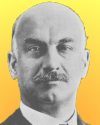
Born 8 Nov 1866; died 23 May 1941 at age 74.
English engineer, who founded the Austin Motor Company (1905), whose Austin Seven model greatly influenced British and European light-car design. In 1884, after completing his early education Herbert moved to Melbourne, Australia, and apprenticed in engineering at Langlands Foundry. He later became the manager of Wolseley Sheep Shearing Company. In 1893, he returned to the UK with this company in 1893 and soon became the production manager. From long journeys in the Australian outback he had insight into the need for petrol driven vehicles. In 1895, he produced the first Wolseley car (a three wheeler) and in 1900, his first Wolseley four wheel design. By 1914, the company was producing more then 1000 cars with 2000 employees.
English engineer, who founded the Austin Motor Company (1905), whose Austin Seven model greatly influenced British and European light-car design. In 1884, after completing his early education Herbert moved to Melbourne, Australia, and apprenticed in engineering at Langlands Foundry. He later became the manager of Wolseley Sheep Shearing Company. In 1893, he returned to the UK with this company in 1893 and soon became the production manager. From long journeys in the Australian outback he had insight into the need for petrol driven vehicles. In 1895, he produced the first Wolseley car (a three wheeler) and in 1900, his first Wolseley four wheel design. By 1914, the company was producing more then 1000 cars with 2000 employees.
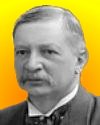
Born 8 Nov 1854; died 28 Dec 1919 at age 65.
Swedish physicist, known for the Rydberg constant in his empirical formula that related the wave numbers of the spectral lines of an element (1890). This formula expressed fundamental relationships in those lines, which he presumed were the result of the inner nature and structure of an element's atoms. In 1897, he suggested that an atomic number for each of the elements, rather than atomic weights, would be a better means for organizing the elements and their periodicity of their characteristics. His work did provided the basis for discovering the electron shell structure of the atom. It was later established that the integer number of positive charges on an element's nucleus (its number of protons) corresponded to his idea of atomic number.«
Swedish physicist, known for the Rydberg constant in his empirical formula that related the wave numbers of the spectral lines of an element (1890). This formula expressed fundamental relationships in those lines, which he presumed were the result of the inner nature and structure of an element's atoms. In 1897, he suggested that an atomic number for each of the elements, rather than atomic weights, would be a better means for organizing the elements and their periodicity of their characteristics. His work did provided the basis for discovering the electron shell structure of the atom. It was later established that the integer number of positive charges on an element's nucleus (its number of protons) corresponded to his idea of atomic number.«
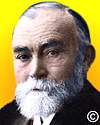
Born 8 Nov 1848; died 26 Jul 1925 at age 76. quotes
Friedrich Ludwig Gottlob Frege was a German mathematician and logician who founded modern symbolic logic and was the first to show mathematics as actually an extension of logic. He extended Boole's work by inventing logical symbols (symbols for “or”, “if-then”, etc.) that improved on the syllogistic logic it replaced. He also worked on general questions of philosophical logic and semantics. His theory of meaning, based on makig a distinction between what a linguistic term refers to and what it expresses, is still influential. Frege tried to provide a rigorous foundation for mathematics on the basis of purely logical principles, but abandoned the attempt when Bertrand Russell, on whose work he had a profound influence, pointed out a paradox that made the system inconsistent.
Friedrich Ludwig Gottlob Frege was a German mathematician and logician who founded modern symbolic logic and was the first to show mathematics as actually an extension of logic. He extended Boole's work by inventing logical symbols (symbols for “or”, “if-then”, etc.) that improved on the syllogistic logic it replaced. He also worked on general questions of philosophical logic and semantics. His theory of meaning, based on makig a distinction between what a linguistic term refers to and what it expresses, is still influential. Frege tried to provide a rigorous foundation for mathematics on the basis of purely logical principles, but abandoned the attempt when Bertrand Russell, on whose work he had a profound influence, pointed out a paradox that made the system inconsistent.
The Frege Reader, by Gottlob Frege and Michael Beaney (ed.). - book suggestion.
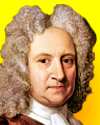

English astronomer, geophysicist and mathematician who is best known for recognizing that a bright comet (later named after him) had appeared several times, calculating its orbit (1682) and for successfully predicting its return. Halley became an influential Fellow of the Royal Society. After originating the question that prodded Isaac Newton to write the seminal Philosophiae Naturalis Principia Mathematica, Halley edited it and arranged its publication. Halley was a professor of geometry at Oxford and later appointed Astronomer Royal. Halley identified the proper motion of stars, studied the moon's motion and tides, realized that nebulae were clouds of luminous gas among the stars, and that the aurora was a phenomenon connected with the earth's magnetism. His prediction of the transit of Venus led to Captain James Cook's voyage to Tahiti.
Edmond Halley: Charting the Heavens and the Seas, by Alan Cook. - book suggestion.
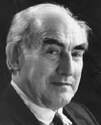
Died 8 Nov 2009 at age 93 (born 4 Oct 1916).
Soviet physicist and astrophysicist whose research ranged over the theory of superconductivity and to the theory of high-energy processes in astrophysics, theories of electromagnetic wave propagation in plasmas, radio astronomy, and the origin of cosmic rays. He helped develop the Soviet hydrogen bomb. In 2003, Ginzburg shared the Nobel Prize in Physics (with Alexei A. Abrikosov and Anthony J. Leggett) for “for pioneering contributions to the theory of superconductors and superfluids.”
Soviet physicist and astrophysicist whose research ranged over the theory of superconductivity and to the theory of high-energy processes in astrophysics, theories of electromagnetic wave propagation in plasmas, radio astronomy, and the origin of cosmic rays. He helped develop the Soviet hydrogen bomb. In 2003, Ginzburg shared the Nobel Prize in Physics (with Alexei A. Abrikosov and Anthony J. Leggett) for “for pioneering contributions to the theory of superconductors and superfluids.”
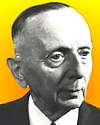
Died 8 Nov 1977 at age 87 (born 15 Jun 1890).
Georg Adolf Otto Wüst was a German oceanographer who, by collecting and analyzing many systematic observations, developed the first essentially complete understanding of the physical structure and deep circulation of the Atlantic Ocean. He used the distribution of ocean properties to obtain clues about motions within the ocean. Wüst also invented the concept of the “core layer,” the layer of water within the ocean that has the most extreme values with respect to one or more properties and therefore is the least mixed and thus shows the path of motion.
Georg Adolf Otto Wüst was a German oceanographer who, by collecting and analyzing many systematic observations, developed the first essentially complete understanding of the physical structure and deep circulation of the Atlantic Ocean. He used the distribution of ocean properties to obtain clues about motions within the ocean. Wüst also invented the concept of the “core layer,” the layer of water within the ocean that has the most extreme values with respect to one or more properties and therefore is the least mixed and thus shows the path of motion.
Encyclopedia of the Sea, by Richard Ellis. - book suggestion.

Died 8 Nov 1969 at age 93 (born 11 Nov 1875).
American astronomer whose systematic observations (1912-25) of the extraordinary radial velocities of spiral galaxies provided the first evidence supporting the expanding-universe theory. Slipher spectroscopically measured the displacement of their spectral lines by the Doppler effect by which the wavelength of light from an object moving away from an observer will shifted toward the red end of the spectrum. Earlier, Slipher had determined the rotation periods of some of the planets by spectroscopic means. With Lowell (1912), he found Uranus had a rotation period of 10.8 hours. He also produced comparable data for Venus, Mars, Jupiter, and Saturn and showed that Venus's period was much longer than expected.
American astronomer whose systematic observations (1912-25) of the extraordinary radial velocities of spiral galaxies provided the first evidence supporting the expanding-universe theory. Slipher spectroscopically measured the displacement of their spectral lines by the Doppler effect by which the wavelength of light from an object moving away from an observer will shifted toward the red end of the spectrum. Earlier, Slipher had determined the rotation periods of some of the planets by spectroscopic means. With Lowell (1912), he found Uranus had a rotation period of 10.8 hours. He also produced comparable data for Venus, Mars, Jupiter, and Saturn and showed that Venus's period was much longer than expected.
Died 8 Nov 1934 at age 73 (born 12 Jan 1861). quotes
American philosopher and theoretical psychologist who influenced the formative period of psychology in 1890s America. He considered the relevance of Darwinian evolution to psychology. He regarded individual differences as a focus for study and held that theory held an important place psychology, while being critical of the value of narrow experimentalism.
American philosopher and theoretical psychologist who influenced the formative period of psychology in 1890s America. He considered the relevance of Darwinian evolution to psychology. He regarded individual differences as a focus for study and held that theory held an important place psychology, while being critical of the value of narrow experimentalism.
Died 8 Nov 1911 at age 87 (born 2 Jun 1824). quotes
English physician (1st Baronet) who was a founding father of clinical science. He recognized the importance of pathology and made his mark with the publication on his Lectures on Pathological Anatomy (1863). He identified the visceral lesions of syphilis. His additional contributions to the previous descriptions by other physicians at Guy's Hospital, improved the understanding of Addison's, Bright's and Hodgkin's diseases. Sir Thomas Barlow described Wilks as having “started the systematic and practical teaching of morbid anatomy, and for nearly thirty years Wilks represented and embodied at Guy's Hospital the important combination of a great morbid anatomist, and a great clinical physician and teacher.” Wilks (1896-1900) and Barlow (1910-14), served terms as President of the Royal College of Physicians.«
English physician (1st Baronet) who was a founding father of clinical science. He recognized the importance of pathology and made his mark with the publication on his Lectures on Pathological Anatomy (1863). He identified the visceral lesions of syphilis. His additional contributions to the previous descriptions by other physicians at Guy's Hospital, improved the understanding of Addison's, Bright's and Hodgkin's diseases. Sir Thomas Barlow described Wilks as having “started the systematic and practical teaching of morbid anatomy, and for nearly thirty years Wilks represented and embodied at Guy's Hospital the important combination of a great morbid anatomist, and a great clinical physician and teacher.” Wilks (1896-1900) and Barlow (1910-14), served terms as President of the Royal College of Physicians.«
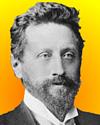
Died 8 Nov 1908 at age 61 (born 14 Sep 1847). quotes
English physicist and inventor who was a pioneer in technical education. He collaborated with John Perry, and their numerous inventions include an electric tricycle (1882), the first practical portable ammeter, voltmeter and other instruments for electrical measurement. Earlier in his career, he had spent five years with the Indian Telegraph Service during which time he developed techniques for fault detection in order to maintain the telegraph system.«
English physicist and inventor who was a pioneer in technical education. He collaborated with John Perry, and their numerous inventions include an electric tricycle (1882), the first practical portable ammeter, voltmeter and other instruments for electrical measurement. Earlier in his career, he had spent five years with the Indian Telegraph Service during which time he developed techniques for fault detection in order to maintain the telegraph system.«
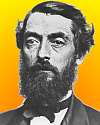
Died 8 Nov 1880 at age 61 (born 29 Mar 1819).
American petroleum engineer who drilled the first productive oil well near Titusville, Pennsylvania, which launched the modern U.S. petroleum industry. A former railroad conductor, his success in hitting oil was based on his belief that drilling would be the best way to obtain petroleum from the earth. He organized Seneca Oil Co., leased land, and on 27 Aug 1859, struck oil at a depth of 69 feet. Drake used an old steam engine to power the drill. After his well began to produce oil, other prospectors drilled wells nearby. Other men, with better business sense, grew rich from the oil boom, yet Drake died in poverty, after years of crippling illnesses. more
American petroleum engineer who drilled the first productive oil well near Titusville, Pennsylvania, which launched the modern U.S. petroleum industry. A former railroad conductor, his success in hitting oil was based on his belief that drilling would be the best way to obtain petroleum from the earth. He organized Seneca Oil Co., leased land, and on 27 Aug 1859, struck oil at a depth of 69 feet. Drake used an old steam engine to power the drill. After his well began to produce oil, other prospectors drilled wells nearby. Other men, with better business sense, grew rich from the oil boom, yet Drake died in poverty, after years of crippling illnesses. more
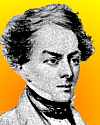
Died 8 Nov 1860 (born Aug 1799).
English archaeologist who was the first to make a thorough investigation of the ruins of ancient Lycia in Asia Minor, including Xanthus, the capital of Lycia. The Lycian marbles he shipped to the British Museum formed a large part of the collection of Greek sculpture in London. He wrote about his first exploration in 1838 in A Journal Written During an Excursion in Asia Minor. After his second exploration of a further thirteen ancient cities in 1840 he published An Account of Discoveries in Lycia. He continued his work in there in 1842 and again in 1844. He also wrote on the coins of ancient Lycia.«
English archaeologist who was the first to make a thorough investigation of the ruins of ancient Lycia in Asia Minor, including Xanthus, the capital of Lycia. The Lycian marbles he shipped to the British Museum formed a large part of the collection of Greek sculpture in London. He wrote about his first exploration in 1838 in A Journal Written During an Excursion in Asia Minor. After his second exploration of a further thirteen ancient cities in 1840 he published An Account of Discoveries in Lycia. He continued his work in there in 1842 and again in 1844. He also wrote on the coins of ancient Lycia.«
Travels and Researches in Asia Minor, by Charles Fellows. - book suggestion.

Died 8 Nov 1858 at age 67 (born 9 Apr 1791).
English mathematician who, with fellow Cambridge undergraduates Charles Babbage and John Herschel brought reform to nomenclature in English mathematics. They formed the Analytical Society (1815) whose aims were to bring the advanced methods of calculus from Europe to Cambridge to replace the increasingly stagnant notation of Isaac Newton from the previous century. The Society produced a translation of a book of Lacroix in the differential and integral calculus. In 1830, he published Treatise on Algebra which attempted to give algebra a logical treatment, and which went at least partway toward the establishment of symbolic algebra. Instead of using only numbers he used objects, and showed the associativity and commutativity of these objects.
English mathematician who, with fellow Cambridge undergraduates Charles Babbage and John Herschel brought reform to nomenclature in English mathematics. They formed the Analytical Society (1815) whose aims were to bring the advanced methods of calculus from Europe to Cambridge to replace the increasingly stagnant notation of Isaac Newton from the previous century. The Society produced a translation of a book of Lacroix in the differential and integral calculus. In 1830, he published Treatise on Algebra which attempted to give algebra a logical treatment, and which went at least partway toward the establishment of symbolic algebra. Instead of using only numbers he used objects, and showed the associativity and commutativity of these objects.
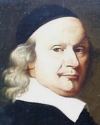
Died 8 Nov 1703 at age 86 (born 3 Dec 1616). quotes
British mathematician who introduced the infinity math symbol. Wallis was skilled in cryptography and decoded Royalist messages for the Parliamentarians during the Civil War. Subsequently, he was appointed to the Savilian Chair of geometry at Oxford in 1649, a position he held until his death more than 50 years later. Wallis was part of a group interested in natural and experimental science which became the Royal Society, so Wallis is a founder member of the Royal Society and one of its first Fellows. Wallis contributed substantially to the origins of calculus and was the most influential English mathematician before Newton.[DSB gives dates 3 Dec 1616 - 8 Nov 1703. EB gives 23 Nov 1616 - 28 Oct 1703.]
British mathematician who introduced the infinity math symbol. Wallis was skilled in cryptography and decoded Royalist messages for the Parliamentarians during the Civil War. Subsequently, he was appointed to the Savilian Chair of geometry at Oxford in 1649, a position he held until his death more than 50 years later. Wallis was part of a group interested in natural and experimental science which became the Royal Society, so Wallis is a founder member of the Royal Society and one of its first Fellows. Wallis contributed substantially to the origins of calculus and was the most influential English mathematician before Newton.[DSB gives dates 3 Dec 1616 - 8 Nov 1703. EB gives 23 Nov 1616 - 28 Oct 1703.]
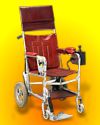
c. 1988
In 2018, an online auction closed for a motorised wheelchair (c.1988) used by Stephen Hawking. It was a lot listed by Christie’s with an initial estimate of £10,000 - £15,000. The sale was “offered to benefit the Stephen Hawking Foundation and the Motor Neurone Disease Association.” The price realized was £296,750. The wheelchair was notable as the earliest surviving example of one used by physicist Stephen Hawking. He used it from the end of the 1980s until early in the 1990s, before he became unable to use his hands on the control. BEC Mobility manufactured the wheelchair (serial number 440609) in England, with red and maroon leather. Motor modifications, were made as needed to improve its functionality.«
In 1997, the main channel of the Yangtze River in China began to be blocked in preparation for the world's largest hydroelectric power project.*
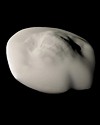
In 1980, scientists at the Jet Propulsion Laboratory in California announced the discovery of a 15th moon orbiting the planet Saturn, by Richard Terrile and the Voyager I team, from photographs taken on 6 Nov 1980. Originally designated S/1980 S28, the moon was named (1983) after Atlas, a Titan, and a son of Iapetus. (Atlas was ordered by Zeus to uphold the vault of the sky after the defeat of the Titans. Atlas was so strong that he supported the weight of the Universe on his shoulders.) Atlas is a small, inner moon of Saturn, with a mean radius of 9.4 miles (15.1 km), and a distinctive flying saucer shape. It orbits 85,544 miles (137,670 km) away from the planet on the outer edge of Saturn’s A Ring, every 14.4 hrs.«
In 1931, Fredrick Allison, working in Alabama, reported (erroneously) the discovery of “alabamine,” element 85, now known as astatine, the heaviest halogen. Astatine was first synthesized and correctly identified in 1940 by bombarding bismuth with alpha particles (Corson, MacKenzie, and Segré). All astatine isotopes are highly radioactive and very short lived. Thus the amount of astatine in nature is too small for Allison to have detected, using his own "Magneto-Optic Method of Chemical Analysis," (also debunked.) In the 1920s and 30s, scientists were eager to find the elements 85 and 87, as predicted by Mendeleev. Allison's reported discovery was premature because of poor experimental design and experimenter bias.
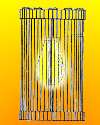
In 1910, the first U.S. patent for an "electric insect destroyer" was issued to William H. Frost of Spokane, Washington (No. 974,785). The invention used a number of electrically energized parallel wires such that a flying insect passing between them would complete the circuit by bridging the wires with its body and electrocute the insect. The patent describes using fine wire and tensioners to keep the parallel segments taut. The charge on the wires could be supplied using an induction coil and a battery. The form of the device could be as a flat frame, or as a cylindrical arrangement surrounding a light to attract the insects into the charged cage.
In 1904, the first U.S. patent for a separable electric attachment plug was issued to inventor and manufacturer Harvey Hubbell of Bridgeport, Connecticut (No. 774,250). One part adapted the Edison screw socket to provide its own double-slotted receptable now familiar throughout North America. Into it, a separate double flat-prong plug could be slipped. This solved the problem of twisted wires caused with a screw connection. Small slots reduced the chance of a dangerous shock. Thus, with a two-prong plug on any electric device, “electrical power in buildings may be utilized by persons having no electrical knowledge or skill.” On 11 Aug 1896 he had patented the pull-chain switch light socket (No. 565541). His manufacturing company, Harvey Hubbell Inc. exists today.«
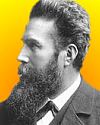
In 1895, Wilhelm Röntgen first observed X-rays during an experiment at Würzburg University. After further investigation, on 1 Jan 1896, he notified other scientists of his discovery of this new radiation that would become known as X-rays. He sent copies of his manuscript and some of his X-ray photographs to several renowned physicists and friends, including Lord Kelvin in Glasgow and in Paris. On 5 Jan 1896, Die Presse published the news in a front-page article which described his investigations and suggested new methods of medical diagnoses might be made with this new kind of radiation.«*
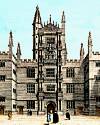
In 1602, the Bodleian Library was formally opened in Oxford, England, named after Thomas Bodley who led the refitting of the earlier Duke Humfrey’s Library at the university. That former library was housed from 1488, in a room above the Divinity School, but had been badly neglected. Bodley stepped up in 1598, offering to take charge, at his own cost, to reverse its decline. It began with about 2,000 books, and manuscripts, with some donated by Bodley himself, and by other benefactors. Bodley continued to collect books with diverse interests. By the time of his death in 1613, he had left plans for further expansion of the library and its building. By 1620, it held 16,000 items. It now has many millions, and is still growing.«
A Brief History of the Bodleian Library, by Mary Clapinson. - book suggestion.

